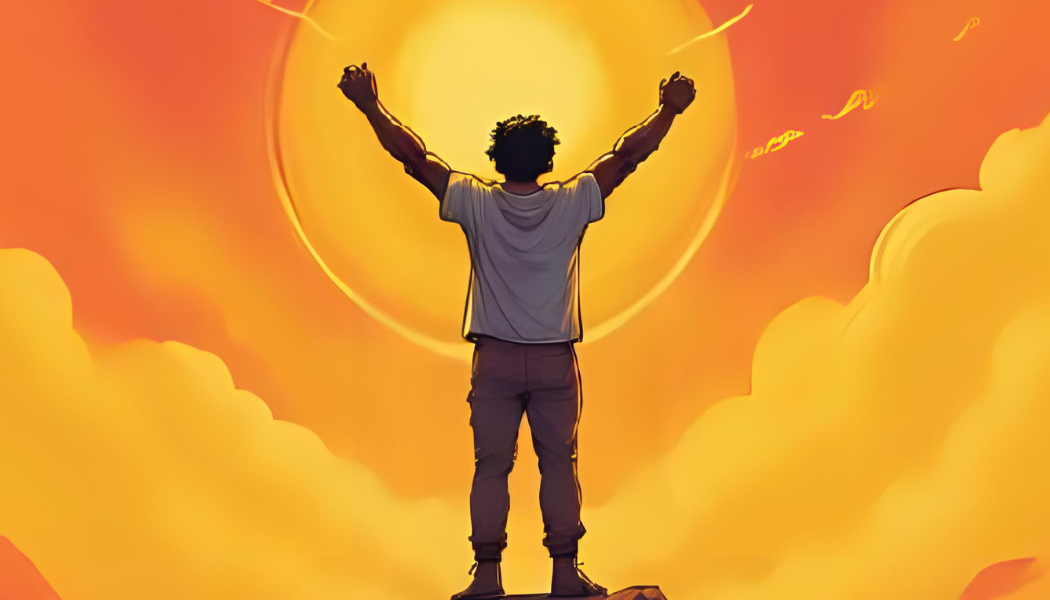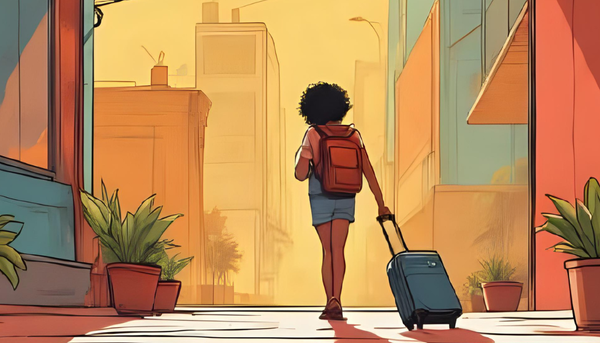
Do these sentences resonate? 👇
- “I’m tired of being told to be strong when I’m already exhausted.”
- “I want to bounce back, but I also want permission to rest.”
- “I keep asking myself: push through or pause?”
“Hope is a discipline.” — Mariame Kaba. The question is when we train that discipline, and when we let the muscle recover. 🌱
Resilience is our capacity to face tough moments and keep moving with care. It is not toxic positivity. It is a mix of skills, supports, and boundaries that help us persist without burning out. In this piece, we map when to flex, when to rest, and how this plays out for Gen Z and for those of us who are BIPOC, first-gen, or low-income navigating extra layers like bias, caregiving, and money stress. 💪🏽

“Not everything that is faced can be changed, but nothing can be changed until it is faced.” — James Baldwin
What is resilience, really?
Resilience is not “just try harder.” It is a realistic assessment of the moment, a plan for what matters most, and a feedback loop with your body and your people. Think of it like interval training: brief, intentional pushes followed by recovery. Over time, the muscle grows.
Spot the difference:
- Resilience: name the reality, pick one next step, ask for help, rest on purpose.
- Not resilience: ignoring warning signs, people-pleasing until empty, treating rest like failure.
What are Gen Z realities right now? 📊
Many of us are juggling financial anxiety and uncertainty, which makes resilience work harder. Recent data shows nearly half of Gen Z do not feel financially secure, and national stress levels remain high. That context matters, because resilience is easier with stable ground and harder on quicksand.
Why this matters: it is normal if “bouncing back” takes longer during chaotic seasons.
What do flex moments look like?
Flex the muscle when there’s a clear value at stake and a next step you can execute today.
- Safety: schedule the doctor visit, send the difficult email, set the boundary.
- Learning: ship the draft, ask for feedback, miss a shot and shoot again.
- Community: show up for your people and let them show up for you.
What do rest moments look like? 💤
Rest is not a reward at the end; it is part of the set.
- Your body is loud: headaches, brain fog, tears for no reason.
- The cost is too high: you are sacrificing health or integrity.
- You are stuck: pushing harder will not change the system; a new tactic or ally might.
What’s different for BIPOC, first-gen, or low-income folks?
The resilience narrative can feel heavy when systems are uneven. Access to care and culturally competent support is not equally distributed, and treatment rates differ by race and income. Many of us are balancing multigenerational responsibilities, code-switching at work or school, and financial pressure.
How we adapt: build collective care into the plan, document bias, seek resources that honor culture and cost, and treat rest as strategy, not luxury.
What are simple “micro-reps” that build resilience? 🧱
Small reps, repeated often, create capacity.
- 90-second breath reset before hard calls.
- One “ask” per week: a ride, a reference, a time extension.
- A shared check-in with a friend: what mattered, what was hard, what is next.
Before flexing or resting, pause. Notice your body, your calendar, and your values this week. Let the data of the day guide the decision, not just the vibe. 🌿

“I am deliberate and afraid of nothing.” — Audre Lorde
Take a moment to reflect on your own season. Here are five quick prompts to help you choose your next move with intention:
- What is one step YOU can take in 15 minutes?
- What would rest look like for YOU today?
- Who can back YOU up this week?
- What next boundary protects YOUr energy best?
- How can YOU remind yourself that rest and resilience go hand in hand?

"The secret of our success is that we never, never give up.” — Wilma Mankiller
Click on the dropdowns below to see the easy action items:
Do one of these things TODAY 👇
- Write a 3-line plan: the goal, the first step, who you will text for support.
- Put a 20-minute recovery block on your calendar and keep it.
- Draft a one-sentence boundary you will say out loud before the next hard moment.
Say one (or all) of these affirmations out loud 👇
- “I can be brave and gentle at the same time."
- "Rest is part of resilience, not the opposite of it."
- "I ask for help because community is strength."
- "My story includes repair, not just strain."
- "I move one honest step at a time."
Channel that feeling 👇
Feeling overwhelmed? Do a 90-second inhale 4, hold 4, exhale 6 cycle, then choose one next step.
Feeling activated by bias? Document what happened, save emails or screenshots, and loop in someone you trust.
Feeling hopeful? Send a gratitude text to the person who made today lighter.
Some vibes to close us out
Resilience is not a solo sport.
It is a team practice with rest built in.
If this month is heavy for you or your people, we see you.
September is Suicide Prevention Month, and community matters now more than ever. 💛
YOU got this. 💭✨
Sources
- "2025 Gen Z and Millennial Survey." Deloitte (2025).
- "Highlights by Race/Ethnicity for the 2023 National Survey on Drug Use and Health." SAMHSA (2024).
- "Stress in America 2024: A Nation in Political Turmoil." American Psychological Association (2024)."

Dig into this topic deeper by signing up for our FREE newsletter.
You'll be able to download the reflection worksheet to put all these actions into one page.
Once you're in, come back to this page and download your new go-to resource.




